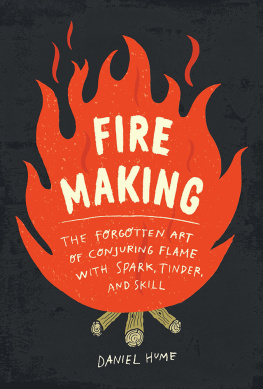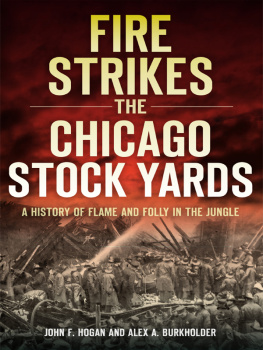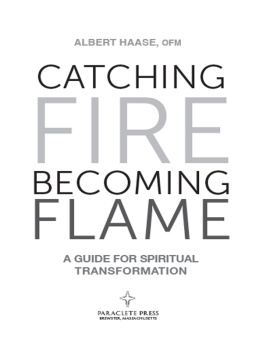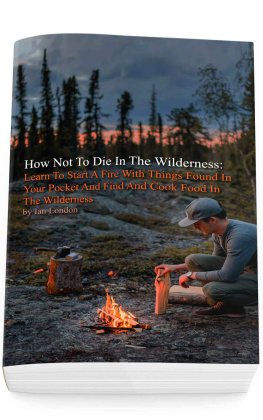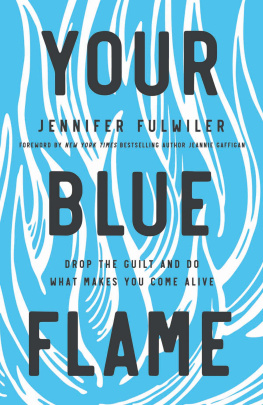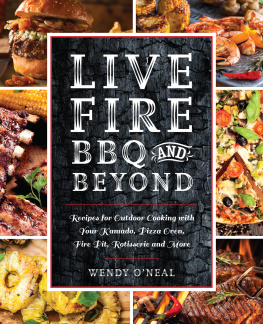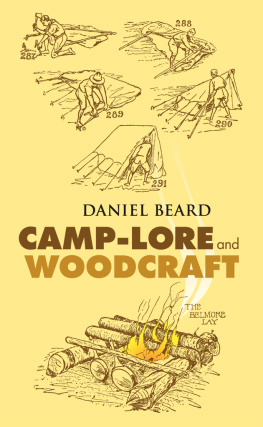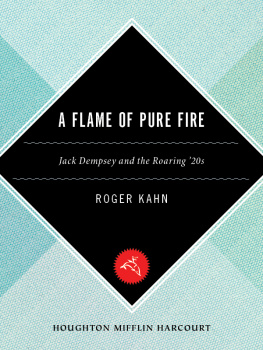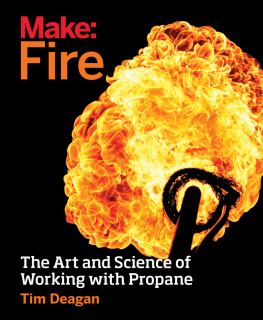
ABOUT THE AUTHOR
Daniel Hume is a naturalist and wilderness adventurer and an authority on traditional bush skills from around the world. One of his deepest interests throughout his life has been the art of making and using fire; as a youngster, he set out to learn every method used to conjure it. In more recent years he has made it his mission to travel the world, often to the most remote corners, to meet people who still directly interact with fire in traditional ways and to learn from their wisdom. He has mastered some of the most extraordinary fire-making techniques from across the globe and gained a unique insight into what fire means to the human race. Since 2006, he has served as an instructor at Ray Mears, the Woodlore School of Wilderness Bushcraft, a premier wilderness-training school in the UK that has offered courses and overseas expeditions for more than 30 years. He lives in the UK.
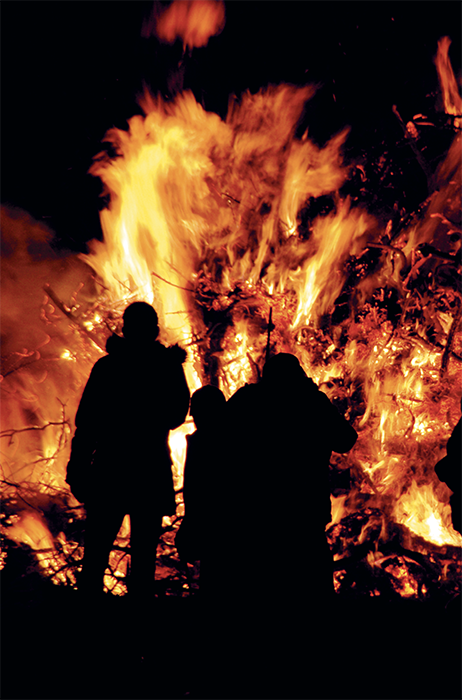
INTRODUCTION
Fire is mankinds oldest energy.
It mustve left a love of fire inside human genes.
LARS MYTTING
H AVE YOU EVER GAZED into the flickering red and orange flames of a fire and felt mesmerized, inspired, and energized? Fire is at the root of the progress of the human race, and the instinct to huddle closely around, facing inward toward the flames warming our hands and faces, is one of the most ancient and deeply rooted of all. Fire fascinates, captures the imagination, and brings families and communities together. Like any of the wonders and mysteries of the universe, it has the ability to touch something deep inside all of us.
For hundreds of thousands of years, at every corner of the globe, humans have relied on fire. From the bushmen in the Kalahari desert rhythmically circling their fire as part of a ritual trance dance to heal a sick child, to Sami reindeer herders in northern Finland waiting patiently for their kettles to bubble over the flames, fire brings its benefits to us all.
Fire plays a central role for all of us. It provides the basic and primitive essentials of light, heat, energy, and cooking, and extends far beyond this to possess unique spiritual and cultural significance for many. Fire connects us to others, our emotions, and our history. Our memories are imprinted with it, and it helps to define our communities and our lives.
My memories of fire are as clear as glass; theyre distinct snapshots like the ones I have of opening much-wanted gifts on Christmas mornings and birthdays. When I was barely as tall as the fireplace itself, I recall helping my dad wad up balls of old ink-smudged newspaper and place them neatly in the grate before we carefully arranged split pine kindling over the top. We lived in an old Victorian house with high ceilings and drafty corners, and there was always an open fire in the living room during the colder months. We would burn mostly coal, but we would sometimes throw on an old log when we had wood that we needed to get rid of. The matches and lighters were kept in an old, rusty-edged blue tin placed on the highest surface in the kitchen, well out of the reach of my own and my brothers small, fearless hands.
I am the eldest of three boys. My brothers, Ben and Sam, and I grew up in the countryside in the Stour Valley, northeast of London. Like many children in the area, we spent most of our time roaming around through nearby fields and woodland, getting caked from head to toe in mud. After having a bath, I would stand in front of the fire with a towel draped around me until I was completely dry and warm. Gradually, as I got older, my parents gave me more responsibility when it came to the fires at home. Soon I was lighting the fire in the living room on my own, taking a chair over to reach for that blue tin so I could strike a match to set the fire ablaze. On other occasions, we would light huge bonfires in the garden. My dad would sometimes make a torch for us by taking a short branch from the pile of wood, wrapping a piece of old burlap sacking around the end, pouring vegetable oil over it, and setting it alight before handing it to me to gaze at in awe. My brothers and I had fun, but were taught the importance of respect, especially when it came to the immense power of fire.
As we grew older, our free time took an altogether different tack as we continued to play and explore outside. I dreamed of the wilderness day and night, and learned anything that could help take me there. The region had been our familys home for at least 350 years, and I thought about barely anything else except walking the same outdoor paths as my relatives and ancestors, discovering as much as I could about the natural world. As a child, I devoured every piece of literature I could find relating to bushcraft and fire-making. The ability to accurately and quickly light a fire is one of the most important skills anyone heading off on a wilderness adventure can possess, yet very little is written about it in a complete way, based on firsthand experience.
At seventeen, I got a job at Woodlore Limited, the UKs leading school of wilderness bushcraft and tracking, a role I enjoyed until stepping down as head of operations in 2017. I continue to teach others. I have devoted my life to learning as much as I can about the natural world, and I have traveled across the globe in a quest to find out more about fires place in our lives and the communities that use it.
Throughout this book, I will present practical, step-by-step explanations of the different ways fires can be conjured, drawing upon my experiences during my travels and teaching of making fire and of the traditions involved. I will also cover wider topics related to fire, such as its place in history, culture, and spirituality, and ultimately how it shapes the world around us.
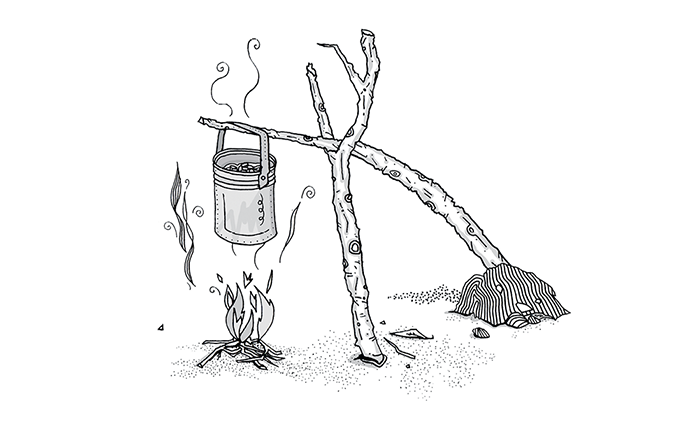
FIRE MAKING: The Forgotten Art of Conjuring Flame with Spark, Tinder, and Skill
Copyright 2018 by Daniel Hume
Photos and illustrations copyright 2018 by Adam Doughty unless otherwise noted on , a continuation of this copyright page.
Originally published in the UK by Century as The Art of Fire
by Daniel Hume 2017.
First published in North America by The Experiment, LLC, in 2018.
Use caution when making fire. The author and publisher specifically disclaim all responsibility for any liability, loss, or riskpersonal or otherwisethat is incurred as a consequence, directly or indirectly, of the use and application of any of the contents of this book.
All rights reserved. Except for brief passages quoted in newspaper, magazine, radio, television, or online reviews, no portion of this book may be reproduced, distributed, or transmitted in any form or by any means, electronic or mechanical, including photocopying, recording, or information storage or retrieval system, without the prior written permission of the publisher.
The Experiment, LLC
220 East 23rd Street, Suite 600
New York, NY 10010-4658
theexperimentpublishing.com
Many of the designations used by manufacturers and sellers to distinguish their products are claimed as trademarks. Where those designations appear in this book and The Experiment was aware of a trademark claim, the designations have been capitalized.

